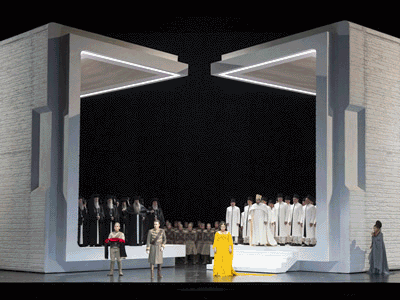
By ANDREW POWELL
Published: August 30, 2017
SALZBURG — Qualitative upticks at the main festival here have heralded Markus Hinterhäuser’s installment as Intendant after a shaky two-summer void. The priority, it appears, is music itself over theater or opera, as might be expected from a boss who is also a professional pianist. Hinterhäuser is retaining the Ouverture spirituelle, a costly 2012 innovation of predecessor Alexander Pereira that ensures a big window for sacred music, and he is returning strength to the chamber-music slate. In a newly staged Aida and a fresh take on La clemenza di Tito this month, the pleasures were musical alone.
Riccardo Muti prepared and led the Verdi, heard at the Großes Festspielhaus fortuitously on Aug. 16 when Anna Netrebko and Daniela Barcellona faced off as the princesses — graduates of Donizetti and Rossini, respectively, and both rich of tone, secure, unstinting, and able to wield the Italian text to exact expressive purpose, generating sequences of actual drama.
One such occurred in the first scene. Barcellona’s Amneris hurled out the imperative Ritorna vincitor! with enough power and point to spin all of Act I around these two words. Muti’s forces — the Vienna State Opera Chorus and the Vienna Philharmonic — emblazoned the mandate with thunderous intensity, leaving Netrebko’s Aida to wanly echo it not as some affront, as many do, but as reason to fear. Her scena rose naturally from the thought, shaped with clear words, dark rumination, ravishing high notes, wondrous floats — this was a steadier performance than for the Aug. 12 video-stream — culminating in a Numi, pietà that would have melted the heart of the stoniest deity, before she promptly vanished, ovationless, as Verdi instructs.
Barcellona’s own brilliant highs and roundness of sound in the middle octave produced exciting duets and ensemble work. A tall actress, she regally commanded her scenes yet managed to convey vulnerability, and in Act IV she slid poignantly from bitterness to remorse — a woman, never the fire-eater — so that the dwindling string parts seemed to trace her fate as much as those of Aida and Radamès, closing the opera perfectly.
Probably the credit belonged with Muti for that last feat, and certainly the sensitive legato in Francesco Meli’s work as Radamès suggested keen preparation, an improvement on his Manrico here two summers ago (when Gianandrea Noseda conducted). Meli sounded best after Act I, his heady metallic timbre acquiring plushness as the action progressed, but he sang with elegance of line all through.
Luca Salsi exuded fatherly authority as Amonasro, sustaining long phrases on a single breath. Dmitry Belosselsky summoned requisite thrust for Ramfis, a stern but precise capo dei sacerdoti, aptly gruff of tone. Most impressive of all, measure for measure, was the true Italian basso of Roberto Tagliavini singing the Rè d’Egitto. Tall like his Amneris, he projected clarion words and mellifluous, weighty tones, apparently without the slightest effort.
After Netrebko’s plea and the brief scene investing Radamès for war — that is, after Act I — the maestro from Molfetta took a full intermission. He had paced this unit of the opera slowly on the whole, at 44 minutes, but had built into it latent strengths, enforcing piani and saying something new with each measure, even in the chanting and dancing, so that Nume, custode e vindice packed more punch than usual and the act could fully balance, not just precede, the one following. An intermission for combat felt only logical.
Out in the lobby, by Café Tomaselli’s (welcome) ice-cream cart, a none-too-sanguine-looking Mariss Jansons engaged in animated chat. The whole crowd in fact seemed stirred if not shaken by the rancor in Memphis. But Aida reverts to human dimensions the moment it has proclaimed its context, and Muti in the next scene elicited the lightest, most mercurial textures for the attendants’ and slaves’ music, choral and orchestral, as if tracing the thoughts of Amneris — leaving Barcellona to gamely play these out on Netrebko.
The conductor supported his singers’ breathing throughout, tending to encourage beauty of phrase and expression. He executed pristine shifts of tempo, tending to inject urgency and sharpen contrasts. He remembered to dance: to honor rhythmic impulses on the instant and ripely characterize them. Best of all, he erred on the side of dynamic restraint, permitting but never urging high decibels.
So this was an Aida on the composer’s terms, nowhere more virtuosic than in its second Thebes scene. Muti finely shaded the women’s and priests’ interludes in the opening Gloria all’Egitto e ad Iside. In the marcia trionfale, what looked like the meter-long, straight, single-rotary-valve C trumpets Karajan used — in place of Verdi’s trombe egiziane in A-flat and B-natural — rang out with immaculate intonation and thrilling antiphony across the gaping stage. The ballabile had infectious rhythm. Salsi’s smooth, obsequious Ma tu, Rè, tu signore possente offset neatly Tagliavini’s grand edicts. The tutti after the priests’ rejection of clemency made its ominous impact, and the Finale’s last section unfolded with tautness.
Each time he entered the pit Muti magnetized attention, and when he trod out it was with the bearing of a mortician, as people roared approval in vanity-stroking counterpoint. But he properly took the remaining three scenes without a formal break, returning in Act III to the stately speeds of the opera’s first two scenes. Netrebko rose to the stipulated dolce high C to conclude O patria mia after conveying that aria’s sense of reflection with exquisite tones, and she and Meli blended tidily for O terra, addio. Barcellona dominated Scene I of Act IV before injecting genuine grief at the close, as noted, to cap a proud Salzburg Festival stage* debut.
Italians in four of the lead roles in this hard-to-cast opera; expert choristers (aided by their confinement to the staging’s Brutalist box structures and by stage-direction prescribing little movement); and Vienna’s orchestra playing with more abandon than for opening night (Aug. 6, as broadcast by BR Klassik) or the video-stream — negating impressions of a musically stilted, dramatically aloof presentation, though these had borne out Muti’s 38-year hiatus from the score and the hiring of a stage director who is really a photographer — reinforced the belief that Salzburg is the one place where ingredients of such quality can come together.
Teodor Currentzis led a vigorous, aurally colorful, not especially elegant traversal of Mozart’s Roman opera Aug. 17 in the Felsenreitschule, with tight support from the Choir and Orchestra MusicAeterna of Perm Opera, or, more precisely, the Choir and Orchestra of Teodor Currentzis. His cast toiled diligently. Golden-toned Golda Schultz acted credibly but sounded overparted as Vitellia in this venue. Marianne Crebassa made a compelling but hyperactive Sesto, not especially sumptuous of voice. She was much cheered after Parto, parto, ma tu ben mio, for the obbligato to which Perm’s clarinetist slunk around her on stage. Reprising a title role he sang at the Met five years ago, Russell Thomas projected his voice with focus and musical authority. The smaller roles of Annio (Jeanine de Bique), Servilia (Christina Gansch) and Publio (Willard White) were adequately sung. At curtain, Currentzis drew wild, really quite bizarre applause, louder than for any cast member.
Neither of the two stagings will be much welcomed going forward. Shirin Neshat’s scheme for Aida, another essay in lens-obedient, firm, gray surfaces that bathe in any light and reflect any color but take us nowhere, features stiff, contrived action hampered and dwarfed by the box structures. Our engagement hinges on costumes, lighting, and initiatives by the singing actors. And Salzburg’s safety curtain more closely evokes Pharaonic Egypt than the commissioned sets. Peter Sellars’ realization of Tito, conversely, has too much fluidity and parades a number of old clichés, many of them Sellars’ own. The idea of intravenous infusions for a bedridden emperor proves especially irksome.
[*She and Netrebko sang I Capuleti e i Montecchi at the festival in 2004 under Ivor Bolton, but in concert. Her career is evolving. October, for instance, brings Schumann and Brahms songs at La Scala.]
Photos © Monika Rittershaus (set; Meli with Netrebko), Marco Borrelli (Barcellona; Barcellona with Netrebko), Franz Neumayr (Muti and Netrebko at curtain call)
Related posts:
Muti the Publisher
Muti Casts His New Aida
Nitrates In the Canapés
Verdi’s Lady Netrebko
Mastersingers’ Depression
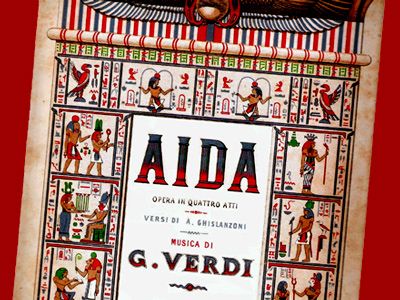
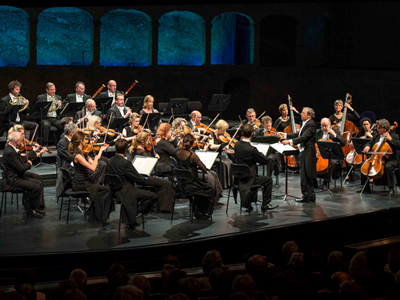
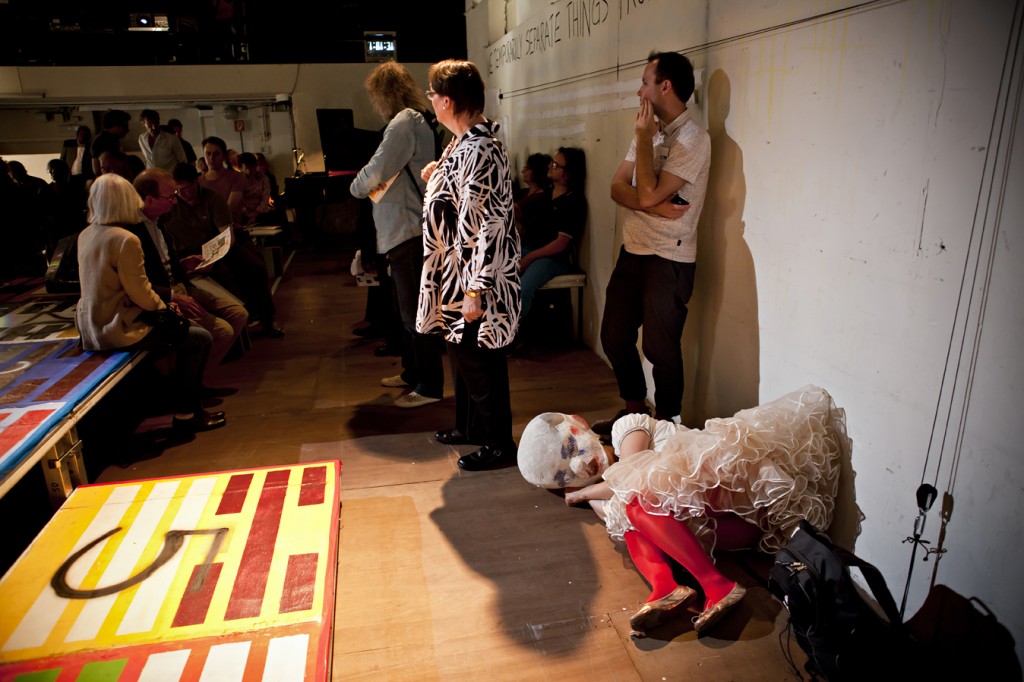
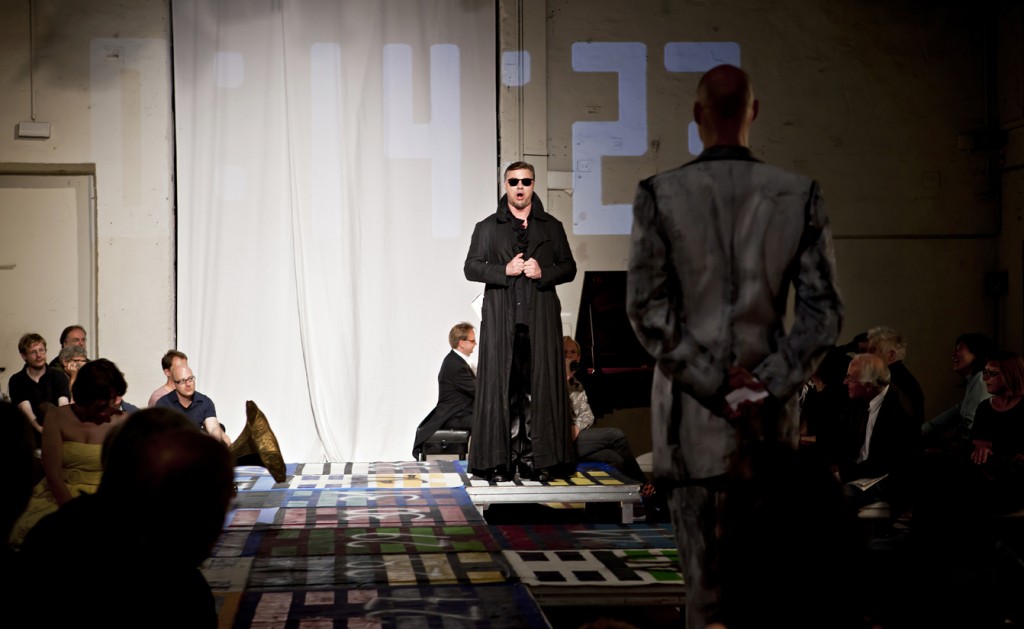
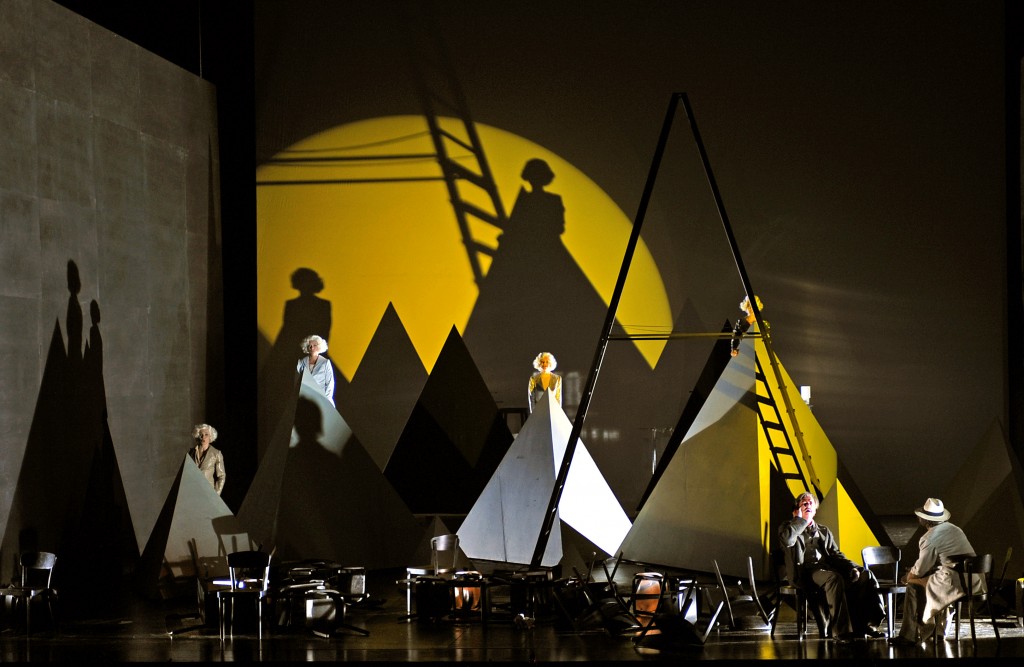
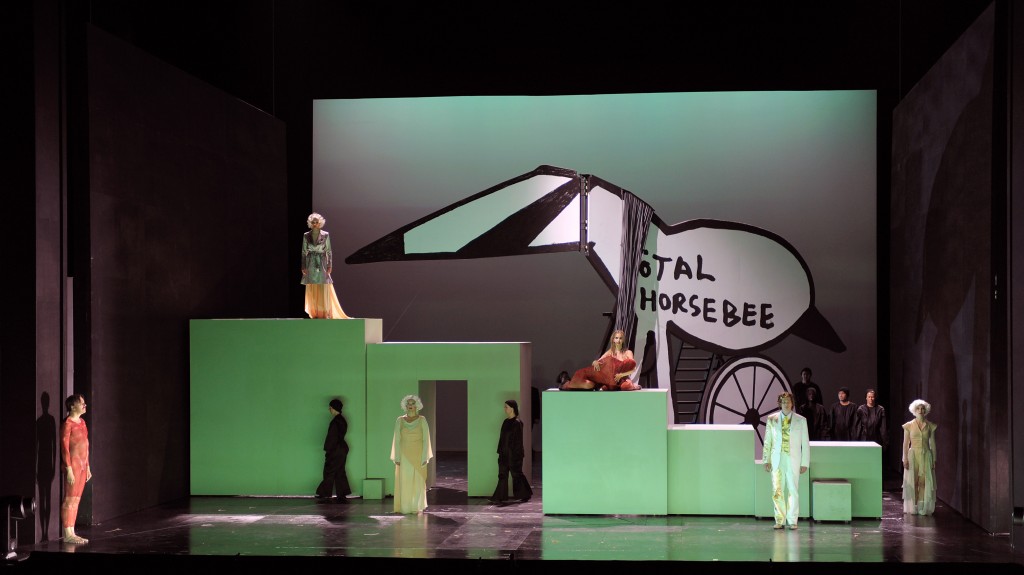
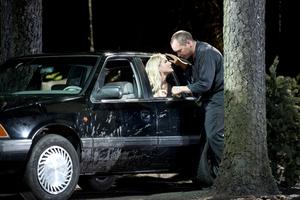
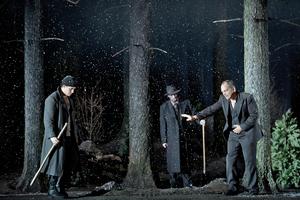
Nitrates In the Canapés
Thursday, August 27th, 2015By ANDREW POWELL
Published: August 27, 2015
SALZBURG — Two beggars sat on either side of the entrance to the Haus für Mozart Aug. 6 as attendees arrived for Norma. As if this was not alarming enough — and it disturbed one’s thoughts more than the tense Résistance staging of Bellini’s opera inside — another two panhandlers were positioned with military discipline at the Kollegienkirche’s door the next evening for the Klangforum Wien concert. And on Aug. 8, before Il trovatore, three beggars zigzagged back and forth between guarded entrances of the Großes Festspielhaus seemingly worried that they could not proceed with their assigned jobs — for these were E.U. citizens dispatched by predatory gangs from Romania, Bulgaria and Hungary, if media reports* are to be believed. Nowhere did the police intercept.
Gyrating in his nearby grave was Herbert von Karajan, the Salzburg maestro who ran the Salzburg Festival adroitly from 1956 to 1989. He liked his gypsies on stage, not on the steps. He continues to fret about his city as local people exile themselves to the suburbs, locally owned businesses die out, historic dwellings are gutted. Having launched two of the four classical-music fairs here, the Salzburg Easter Festival (in 1967) and the Whitsun Concerts (1973), he senses a certain festival fatigue now, with music visitors present eleven weeks of the year. And from Anif cemetery he projects his horror at the main festival’s fuzzy sense of mission and the preservatives lacing its corporate food.
Bärenreiter’s critical edition of Norma relates the tragedia lirica snugly with the rest of Bellini’s output, notably I Capuleti e i Montecchi. On the evidence of this performance — a revival of Patrice Caurier and Moshe Leiser’s May 2013 staging conducted by Giovanni Antonini — it is a swifter, more emotionally direct opera than known in the 20th century, with barer dynamic contrasts, airier textures, incisive choruses and instrumental vibrancy. Its melodies sound more articulate now that they are less dilated, its ornaments more germane. It wants a bright voice for Adalgisa, rationally, and an agile Pollione. The title role is exacting but no sui generis few can sing. Credit the curators. Maurizio Biondi initiated work from the autograph score for Parma performances in 2001 conducted by his brother Fabio; Riccardo Minasi, himself a conductor, furthered the effort for 2010 concerts in Dortmund led by Thomas Hengelbrock.
Already fluent in this version, Antonini brought tautness to Bellini’s lines no matter the tempo or expressive purpose. Lyrical charm flexibly balanced urgency. His cast — the same principals as for Hengelbrock, who left the Norma project before Decca began its related studio recording in 2011 — apparently shared his enthusiasm. Cecilia Bartoli stalked the boards as a priestess and mother possessed (in a production that trades devotion and sacrifice for World War II realism and madness), her long lines and embellishments articulated and colored to keen dramatic effect. Rebeca Olvera portrayed the torn Adalgisa with tender tones and skilled musicianship, partnering Bartoli precisely. John Osborn managed the awkward musical and theatrical chores of Pollione with fluency, almost garnering sympathy, while Michele Pertusi made a dull, unexpectedly suave Oroveso. The Coro della Radio-Televisione Svizzera (from Lugano) and period-instrument Orchestra La Scintilla (based in Zurich) supplied due degrees of vigor, fury and reflection.
Rewards at the Kollegienkirche (Aug. 7) lessened as the music got newer. Sylvain Cambreling on the podium coaxed precise yet nuanced sonorities in Boulez’s orderly cantata Le marteau sans maître (1955), smoothing the handovers of the vocal and instrumental strands and validating the “fertilizer” role of Char’s bitty poems. Hilary Summers’ confident contralto injected spontaneity. Still a functioning church, the lofty space tended to open up Klangforum Wien’s neatly delivered textures, a flattering effect that also helped Olga Neuwirth’s Lonicera caprifolium (Goat-Leaf Honeysuckle) after the break. This haunting 1993 piece for ensemble and audiotape deploys its forces sparingly to spin a distanced, hollowed plaint.
Then came the same composer’s Eleanor in its world premiere. A reduction in suite form of her disliked American Lulu venture of 2011, it promised to distill that work’s strongest ideas via blues singer (Della Miles), drummer (Tyshawn Sorey), ensemble and taped samples. What emerged was a formally hideous anthem to the bravery in political protest, a coarse Neo-Expressionist collage of fragmentary musical and non-musical material awkwardly scored. Sticking out like dusty saucers glued to a Schnabel canvas were Martin Luther King snippets, stale and mournfully unimposing. (Rebecca Schmid has fuller observations.)
Alvis Hermanis’ staging of Il trovatore, from 2014, places the action in the galleries of an art museum energized in reds and enlivened with sliding tableaux. It advances ably enough in Parts I and II of the opera but then, like Olivier Py’s production in Munich, runs out of ideas. There were reassignments this year. Gianandrea Noseda took over the conducting; Ekaterina Semenchuk and Artur Ruciński essayed Azucena and di Luna. Noseda insisted on an outsize orchestral sound, from an eager Vienna Philharmonic, but paid little attention to shaping and informing Verdi’s phrases, at cost to the whole work. Semenchuk sang in lucid Italian with power, expressive control, and theatrical zeal, and just about stole the show. Ruciński produced handsome legato lines, giving full value to notes. He also served as a smart foil to the Leonora, Anna Netrebko, who reprised her warm portrayal. Francesco Meli returned as the capable, not so memorable Manrico. Adrian Sâmpetrean made a clarion Ferrando. The night went sloppily, though, for the Vienna State Opera Chorus, muddying Cammarano’s words.
Perhaps it was the beggars, but this visit has underlined a number of maladies at today’s Salzburg Festival. Politicians run things now. They use proxy managers whose skills center on balancing the books and appeasing conglomerate sponsors — not exactly what Hofmannsthal, Reinhardt, Roller, Schalk and Strauss had in mind. There is no Intendant, or artistic director, this year or next. (The last one, Alexander Pereira, was ousted for having too robust a vision; Markus Hinterhäuser acquires the title in 2017, but he served in the artistically dithering regimes that preceded Pereira’s tenure.) Old formulas are being followed for programming, without a demonstrated understanding of why. The last innovation was the Ouverture spirituelle, back in 2012. Perforce we have seen a weakening in chamber music, a sharp cut in new opera stagings, a thinned, disjointed Ouverture spirituelle, and a miscellany of star-driven programs where there should be focus and mission.
If the institution looks half-detached from its artistic origins, it is fully so from local citizens, who operate, whether farming families or blue-collar workers, at some remove from the city center. Festival catering is emblematic. Conglomerates, not Salzburgers, decide the beverages, the appetizers, the employment contracts, the terms of service — all the while claiming sponsor privileges and bragging of “social responsibility.” A 1-fl-oz ristretto costs €3. Chewy-bread gravlax canapés under nitrate-laced dill sauce are €7.20 a pair. In nearby Munich, where labor costs are higher, vying local caterers offer pure-ingredient fare for reasonable prices, and less recognition.
Some issues run deeper. Locally owned storefronts that forty years ago proudly displayed festival posters, leaflets, mementos and trinkets are now scarcely to be found. A beloved antiquariat vanishes, an Intimissimi opens for business. No large inn remains that is both of the town and independent. Austrian law, protecting building façades not structures, has allowed corporate vandals to rip out the staircases, inner walls and woodwork of a historic block of houses below the Kapuzinerberg to make way for the conforming spaces and plastic fittings of a chain hotel. Festivalgoers’ alienation mounts on the streets, where hoards of tourists from nations that supply the West’s fuel and factory goods now roam in packs, with prams, sticks, mobile devices and religious garb, oblivious to the city’s Roman Catholic roots and its place in music, never mind the goings-on on Hofstallgasse. Only Prague has it worse as a real-life theme park.
Detached and alienated of course is how the beggars feel. So what would Karajan do? He would press the politicians to tighten the laws. He would identify and demand remedies for the harm to the festival within the powers of the city. He would partner with the few local food businesses persevering in the center — Schatz Konditorei, Café Tomaselli, Zum fidelen Affen, a couple of brasseries off the Kaigasse. When he ran the festival, he lured sponsors even as he navigated the artistic direction, and driving Volkswagen’s Scirocco never meant betraying Salzburg’s interests.
[*Nine O’Clock: “Highly irritated by a large number of Romanian beggars taking over … , local authorities have initiated a large-scale operation … . Salzburg media [quoted Mayor Harald Preuner] as saying ‘these people do look for sympathy, but helping them would mean supplying all sorts of mobsters, because the cash does not get to the beggar.’” The Local: “At present, police … have very little power to stop organized begging. … Begging was a central theme in Salzburg’s local election campaign.” “At peak times, around 150 beggars per day have been counted in the center of Salzburg.” UPDATE, The Telegraph (May 25, 2016): “Salzburg banned begging on most of its streets on Wednesday. The ban comes just days after a court overturned fines imposed on four people by the Salzburg police for ‘aggressive begging’ because they said ‘please’ to passersby.”]
Photo © Tourismus Salzburg
Related posts:
Salzburg Coda
Netrebko, Barcellona in Aida
Mozartwoche: January’s Peace
Horses for Mozartwoche
Bartoli’s Scot-Themed Whitsun
Tags:Adrian Sâmpetrean, Alvis Hermanis, Artur Ruciński, Bartoli, Bellini, Boulez, Commentary, Coro della Radio-Televisione Svizzera, Decca, Della Miles, Ekaterina Semenchuk, Eleanor, Francesco Meli, Gianandrea Noseda, Giovanni Antonini, Giuseppe Verdi, Großes Festspielhaus, Haus für Mozart, Herbert von Karajan, Hilary Summers, John Osborn, Klangforum Wien, Kollegienkirche, Le marteau sans maître, Lonicera caprifolium, Maurizio Biondi, Michele Pertusi, Moshe Leiser, Netrebko, Norma, Olga Neuwirth, Orchestra La Scintilla, Patrice Caurier, Rebeca Olvera, Review, Riccardo Minasi, Salzburg, Salzburg Festival, Salzburger Festspiele, Sylvain Cambreling, Tyshawn Sorey, Vienna Philharmonic, Vienna State Opera Chorus, Wiener Philharmoniker, Wiener Staatsopernchor
Posted in Munich Times | Comments Closed